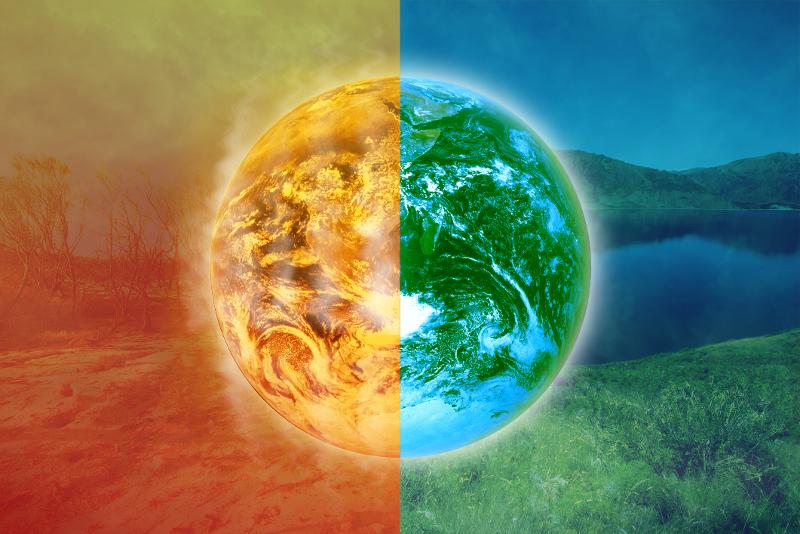Welcome, fellow Earthlings! Today, we embark on a journey to explore the concept of planetary boundaries and their significance in safeguarding our planet's future. Join me as we delve into the nine critical boundaries that define a safe operating space for humanity and the challenges we face in maintaining them. Let's dive in!
Understanding Planetary Boundaries
Unveiling the concept and significance of planetary boundaries
Before we dive into the nitty-gritty details, let's first understand what planetary boundaries are all about. These boundaries represent critical thresholds that, if crossed, could lead to irreversible changes in Earth's system, posing severe risks to human civilization. By defining a safe operating space for humanity, they serve as guardrails to protect our planet's stability and sustainability.
Imagine a world without these boundaries. How would it impact our lives and the delicate balance of our ecosystems? Let's explore further to grasp the essence of this concept.
The Nine Planetary Boundaries
Exploring the key boundaries shaping our planet's future
Our planet's stability and livability rely on nine crucial boundaries. These boundaries include climate, biosphere integrity, air pollution, ocean acidification, ozone depletion, freshwater availability, land use, nutrient pollution, and human pollution. Each of these boundaries plays a vital role in maintaining the delicate balance of our Earth.
Let's take a closer look at each boundary, understanding their impact on our planet and the challenges we face in preserving them.
Climate and Biosphere Integrity
The two main boundaries shaping our planet's future
Among the nine boundaries, climate and biosphere integrity hold paramount importance. These two boundaries directly impact the stability of our planet and are influenced by the other seven boundaries. Climate change, driven by human activities, poses a significant threat to our ecosystems and the well-being of all living beings.
Let's explore the intricate relationship between climate, biodiversity, and the challenges we face in mitigating climate change and preserving the integrity of our biosphere.
Air Pollution and Ocean Acidification
Unveiling the impact of human activities on air and ocean health
Human activities have led to the deterioration of air quality and the acidification of our oceans. Air pollution, caused by the release of harmful gases and particulate matter, poses risks to both human health and the environment. Similarly, the excessive absorption of carbon dioxide by our oceans leads to ocean acidification, disrupting marine ecosystems.
How can we address these challenges and minimize the detrimental effects of air pollution and ocean acidification? Let's delve into potential solutions and the importance of collective action.
Freshwater Availability and Land Use
Examining the impact of human activities on freshwater resources and land
The availability of freshwater and sustainable land use are critical for the well-being of both humans and ecosystems. However, human activities, such as excessive water consumption and unsustainable land practices, have pushed these boundaries to dangerous levels. This jeopardizes our access to clean water and disrupts the delicate balance of our ecosystems.
What steps can we take to ensure the sustainable management of freshwater resources and promote responsible land use? Let's explore potential solutions and the importance of preserving these vital resources.
Nutrient Pollution and Human Pollution
Understanding the impact of nutrient and human pollution on our planet
Nutrient pollution, caused by excessive use of fertilizers, poses a threat to our water bodies and marine life. The influx of nutrients like phosphorus and nitrogen leads to harmful algal blooms, depleting oxygen levels and creating dead zones in lakes and oceans. Additionally, human pollution, including the release of harmful chemicals and waste, further degrades our environment.
How can we combat nutrient pollution and human pollution? Let's explore innovative approaches and the role of sustainable practices in mitigating these challenges.
Conclusion
Planetary boundaries serve as a crucial framework for understanding and safeguarding the delicate balance of our planet. As we have explored the nine boundaries that shape our planet's future, it becomes evident that human activities have pushed several of these boundaries to dangerous levels. Climate change, biodiversity loss, air and water pollution, and unsustainable land practices pose significant challenges.
However, it is not too late to take action. By adopting sustainable practices, promoting collective responsibility, and prioritizing the well-being of our planet, we can work towards restoring and preserving these boundaries. Let us embrace the opportunity to protect Earth's future and ensure a thriving planet for generations to come.
FQA :
What are the consequences of crossing planetary boundaries?
Crossing planetary boundaries can lead to irreversible changes in Earth's system, posing severe risks to human civilization. It can result in climate disruptions, biodiversity loss, degraded air and water quality, and the depletion of vital resources.
Are there any boundaries that have not been crossed yet?
Currently, two boundaries remain relatively safe: aerosols in the atmosphere and ozone depletion. However, it is crucial to continue monitoring and addressing these boundaries to maintain their stability.
What can individuals do to contribute to preserving planetary boundaries?
Individual actions matter. By adopting sustainable practices in our daily lives, such as reducing carbon emissions, conserving water, and supporting responsible land use, we can collectively make a positive impact on preserving planetary boundaries.

